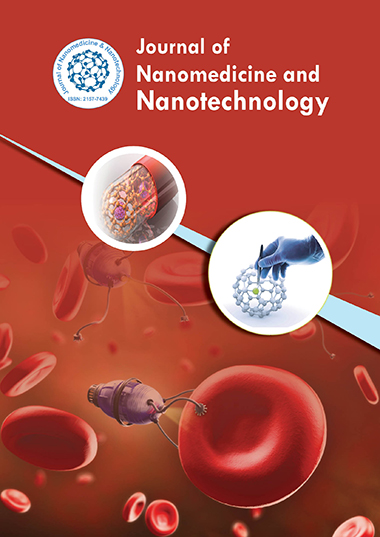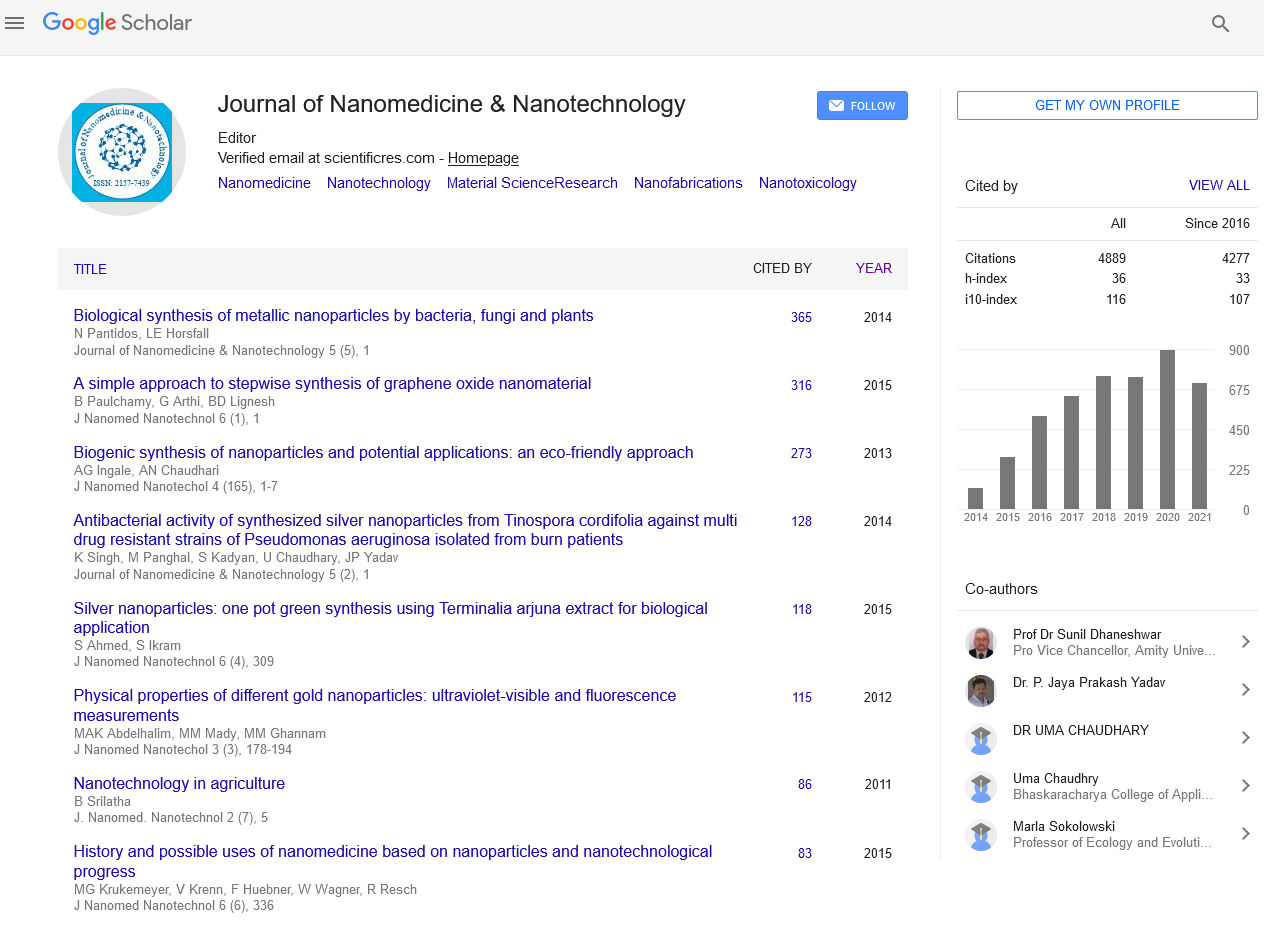Indexed In
- Open J Gate
- Genamics JournalSeek
- Academic Keys
- JournalTOCs
- ResearchBible
- China National Knowledge Infrastructure (CNKI)
- Scimago
- Ulrich's Periodicals Directory
- Electronic Journals Library
- RefSeek
- Hamdard University
- EBSCO A-Z
- OCLC- WorldCat
- SWB online catalog
- Virtual Library of Biology (vifabio)
- Publons
- MIAR
- Scientific Indexing Services (SIS)
- Euro Pub
- Google Scholar
Useful Links
Share This Page
Journal Flyer

Open Access Journals
- Agri and Aquaculture
- Biochemistry
- Bioinformatics & Systems Biology
- Business & Management
- Chemistry
- Clinical Sciences
- Engineering
- Food & Nutrition
- General Science
- Genetics & Molecular Biology
- Immunology & Microbiology
- Medical Sciences
- Neuroscience & Psychology
- Nursing & Health Care
- Pharmaceutical Sciences
Nanoelectrodes from conducting polymers and graphene for regeneration of the corneal nerve via electrical stimulation
20th Asia-Pacific Nanotechnology Congress
July 23-24, 2018 Sydney, Australia
Zheng Zheng, Mimi Lin and Yong Liu
Wenzhou Medical University, China
Posters & Accepted Abstracts: J Nanomed Nanotechnol
Abstract:
Laser in situ Keratomileusis (LASIK) is the most common treatment for the surgical correction of refractive errors. LASIK provides advantages in facilitating visual recovery and slowing down regression. However, LASIK generally causes many complications such as the dry eye. A dry eye is normally caused by the corneal nerve damage during the formation of a superficial flap and ablation of the underlying tissue. Though continuous efforts have been made to solve this issue, the dry eye is still a big challenge for clinic treatment up to date. It has been reported that the Electrical Stimulation (ES) was able to improve the survival rates and axon growth of central nervous system in vivo. In this work, we thus propose to regenerate the LASIK-damaged corneal nerve via ES. The key challenge for application of ES, as we found in our previous study, is the selection of high-performance stimulation electrodes. We plan to solve the electrode problem by the use of nanocomposites from graphene and conducting polymers (e.g. polyaniline). The resulting ES electrode was synthesized from Polyaniline Functionalized Graphene (PAG) which was prepared via a facile but efficient polymerization-enhanced ball milling method. Combination of graphene and polyaniline provides additional advantages for ES such as higher capacitance, faster electron transfer rate and better biocompatibility. Electrical field was applied to the nerve cell attached PAG nanoelectrode. Significantly enhanced axon length and anti-aging ability of corneal nerve cells were observed after ES, suggesting great possibilities for regeneration of the corneal nerve via ES.
Biography :
E-mail: 820933601@qq.com


